As usual, we dedicate some pages of the journal to children, where we tell the life of some “great friends” with many drawings and short texts that are easy and pleasant to read.
Original French text: Benoît Machon and Noëlle Herrenschmidt Illustrations: Noëlle Herrenschmidt
As usual, we dedicate some pages of the journal to children, where we tell the life of some “great friends” with many drawings and short texts that are easy and pleasant to read.
Original French text: Benoît Machon and Noëlle Herrenschmidt Illustrations: Noëlle Herrenschmidt
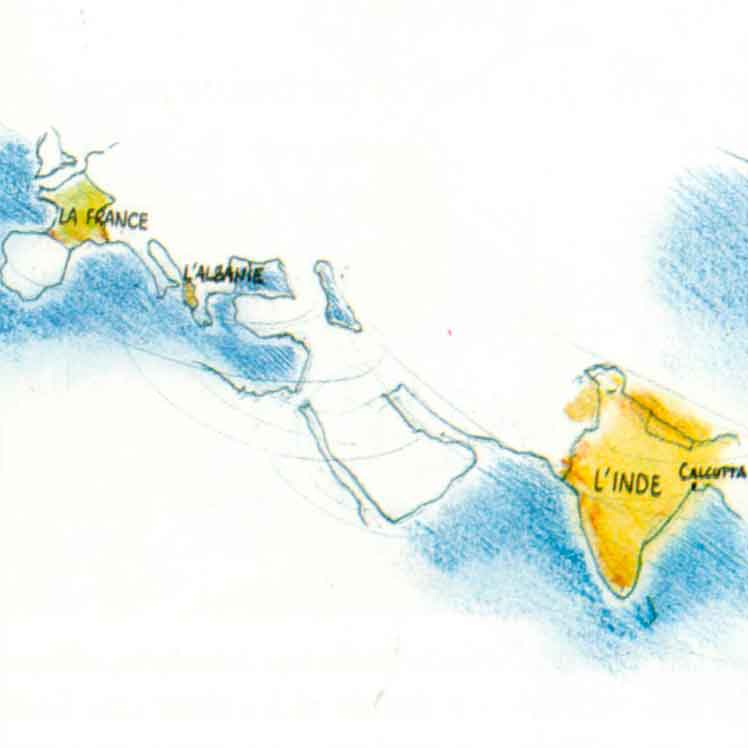
1. Agnes Bojaxhiu is born in Albania on August 27, 1910. She is very young when she decides to become a nun. She leaves for India at 18 and takes the name Sister Teresa.
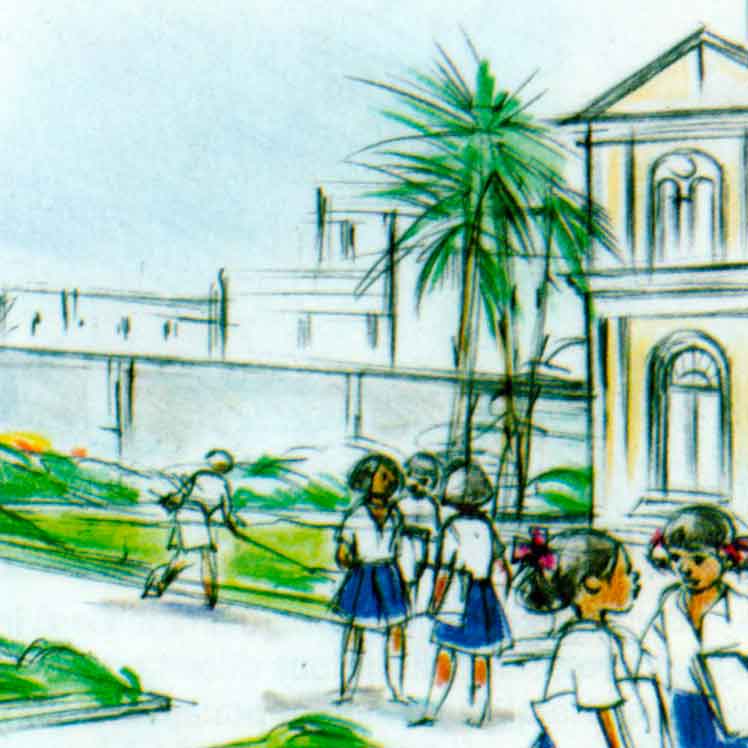
2. At first, she works in a hospital, then is tasked with teaching history to girls in a private school in Calcutta.
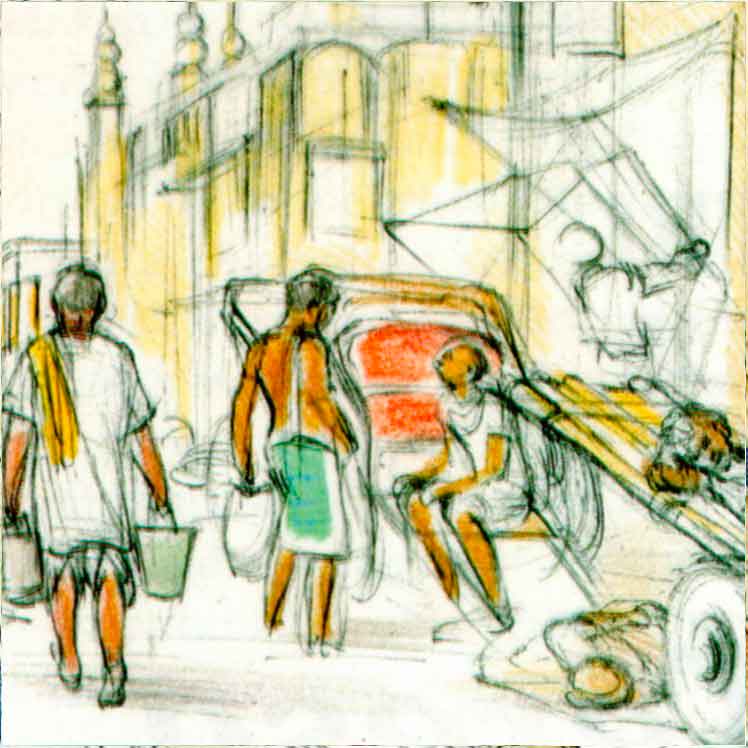
3. The extreme poverty of Calcutta’s outskirts deeply moves her. In 1948, she asks to leave her religious order to open a school among the slum dwellers.
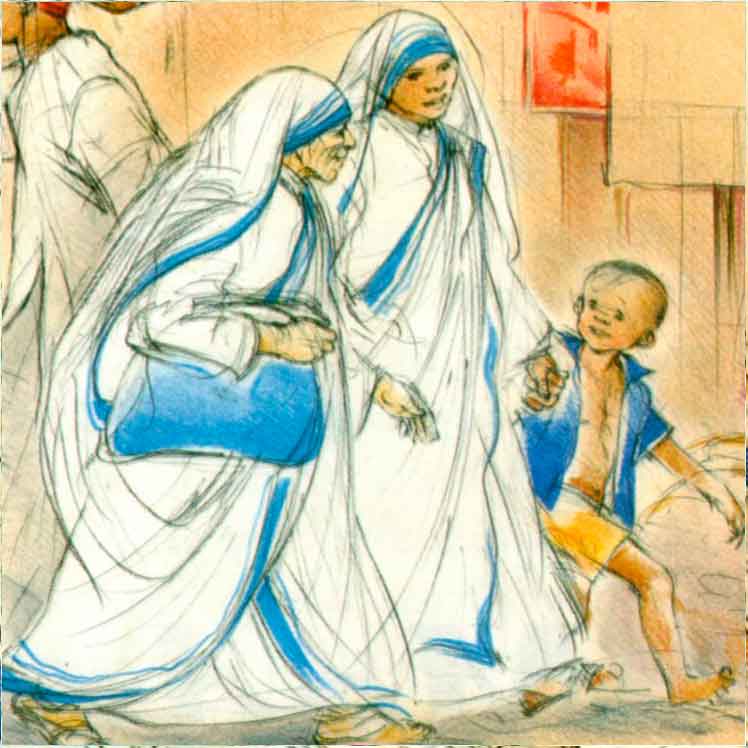
4. Teresa chooses a new nun’s habit, one resembling that of Indian women: a white sari with blue borders. A few months later, one of her former students begins working with her.
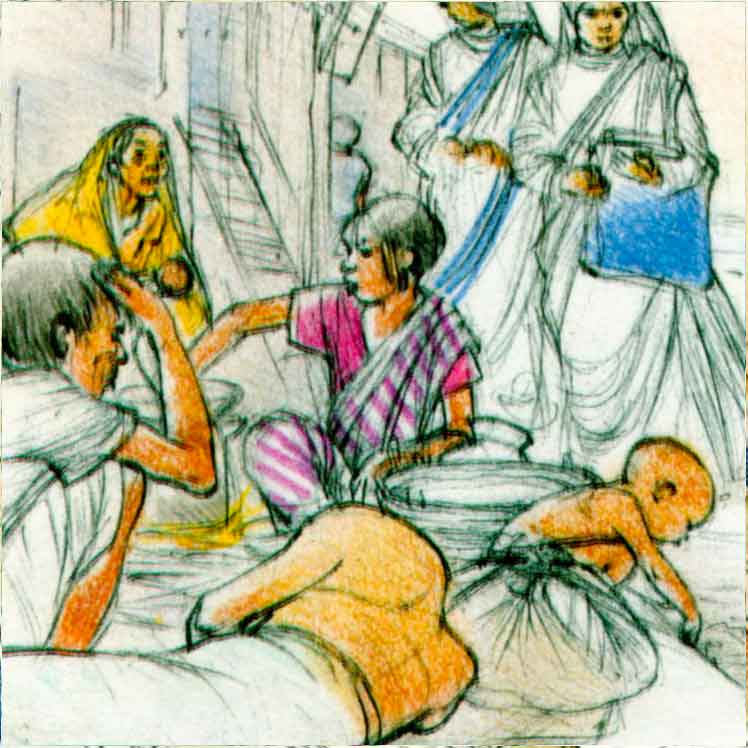
5. Together they decide to serve and love Jesus in every poor person, without distinction of caste or religion. Here we see them bringing food. “We try to offer the poorest the same care and attention that others procure with money.”
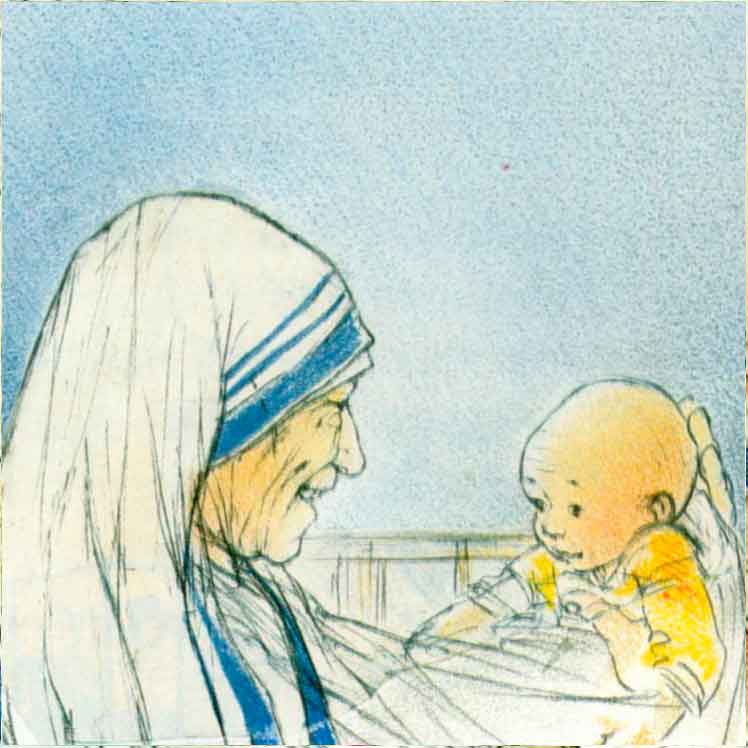
6. One day Teresa finds an abandoned newborn among the trash and decides to found a Home to welcome him along with other children like him. She fights for all children to be able to live. She says: “Every human life has God in itself, even the unborn child.”
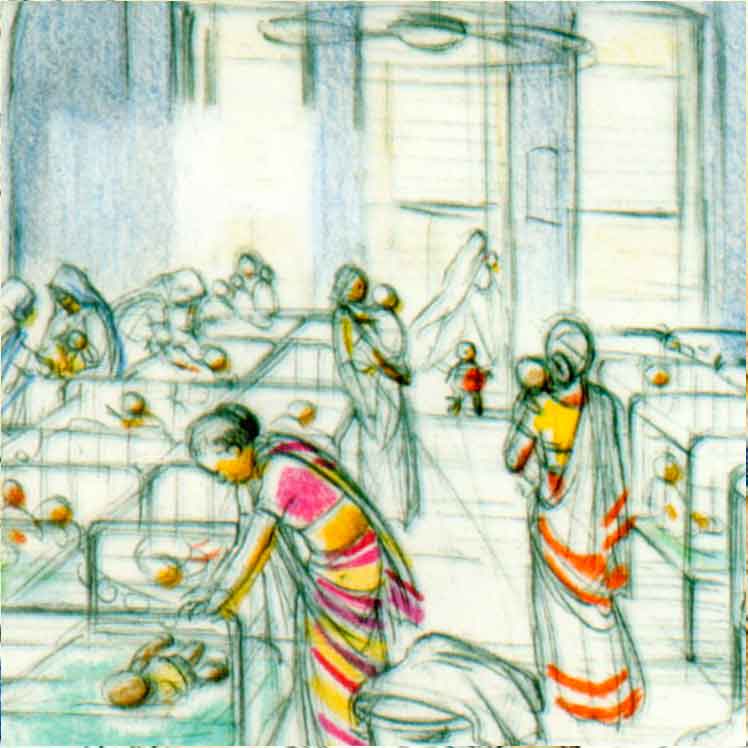
7. Now they call her “Mother Teresa.” She founds a nursery to welcome newborns entrusted to her and mothers with their children.
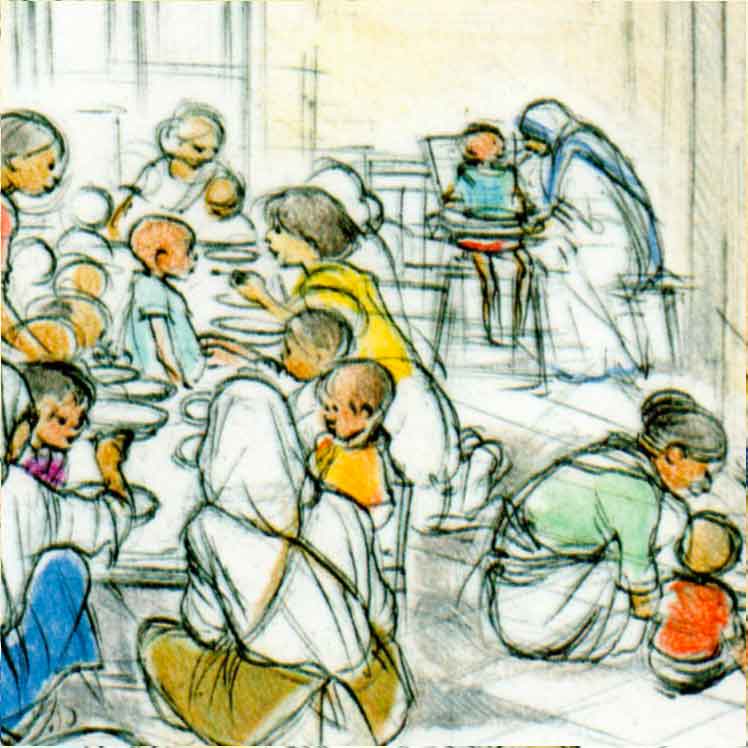
8. The welcoming of these little ones forces the nuns to multiply their activity and service: it’s a race to overcome misery. “My work is only a drop of water in the ocean,” says Mother Teresa.
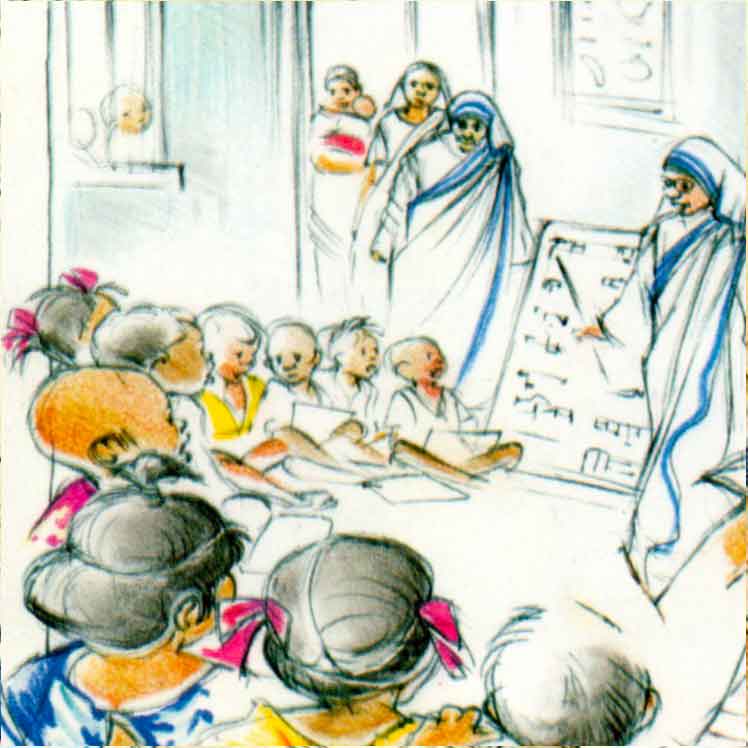
9. After the nursery, a school is necessary. In founding it, Mother Teresa feels that it is the Lord who desires it. Sometimes she says that she herself is like a little pencil in God’s hand.
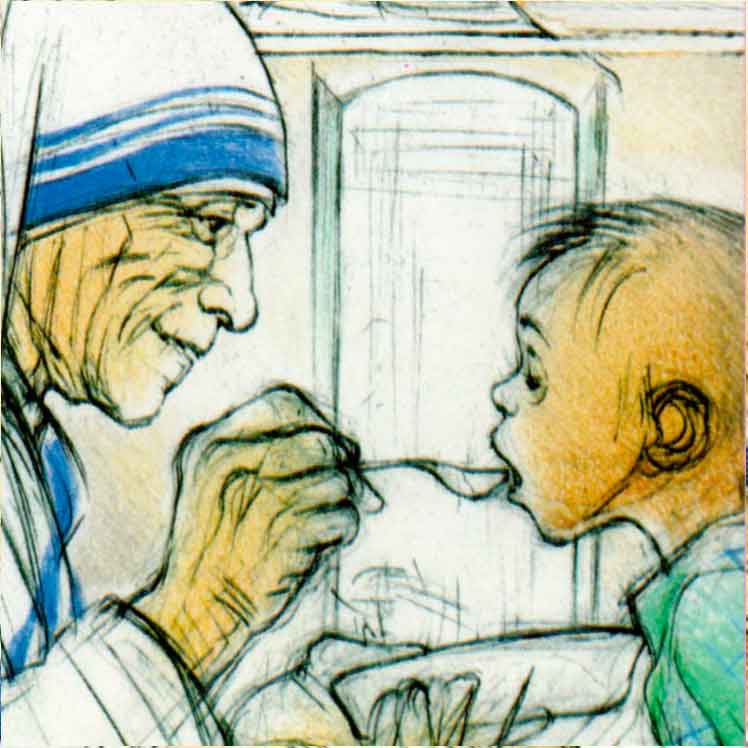
10. Her attention is directed to each individual. It’s a very big commitment, but she says: “I don’t care for crowds, but only for one person.”
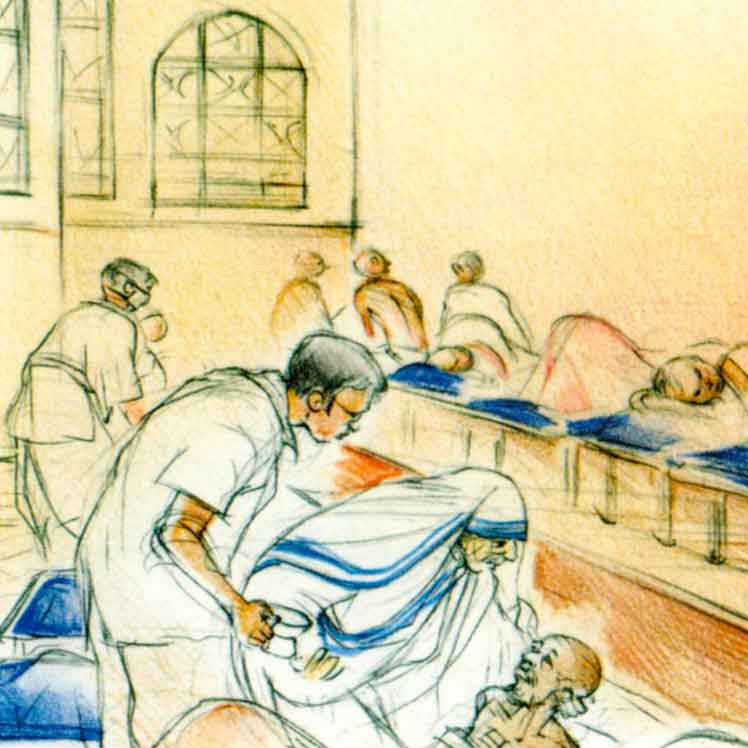
11. A visitor to the leper colony declares: “I wouldn’t touch a leper even for 5000 dollars.” Mother Teresa replies: “Neither would I for 10,000 dollars. But for the love of God, I do it willingly.”
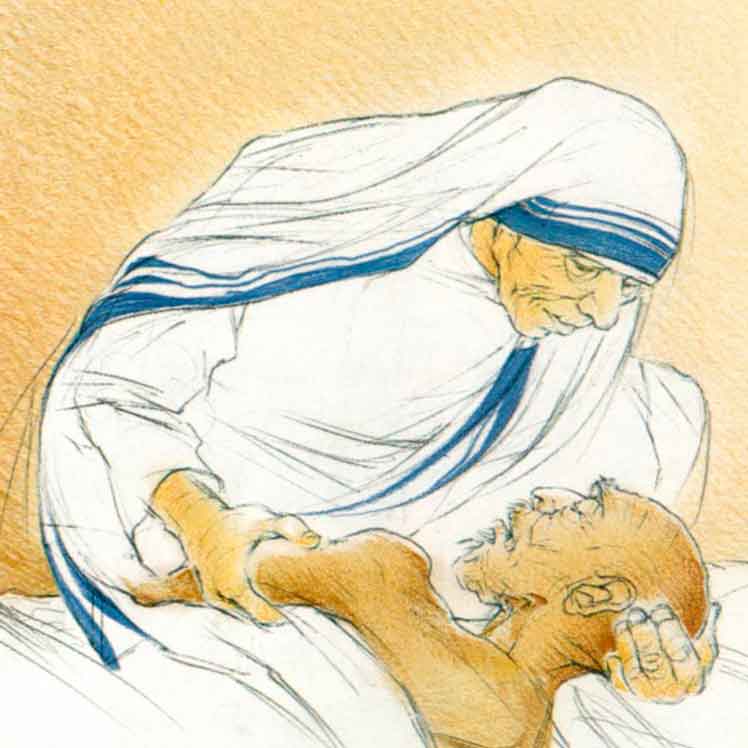
12. What gives strength to the Missionaries of Charity is prayer. Every morning they rise very early to spend a long time in intimate conversation with Jesus. The foundation of their life lies in love and prayer. The community is composed of 6000 nuns and works in 120 countries.

13. For her activity and her love for her neighbor, Mother Teresa received the Nobel Peace Prize. After a life dedicated completely to God and others, she dies in September 1997. You too can spread peace and love around you, you who are looking at these images. These little drops will form an ocean of peace.

14. The nuns collect people who are about to die and who have neither home nor family. A man, whom Mother Teresa picked up from a street gutter, dies in her arms saying: “I have always lived on the streets like an animal, now I die surrounded by love and care.”





